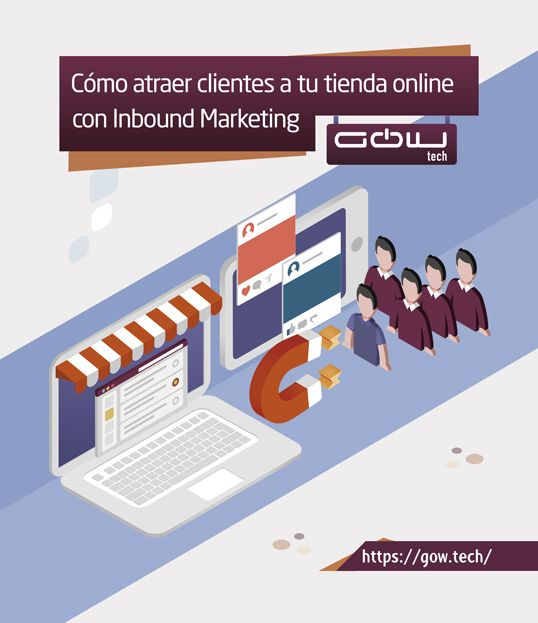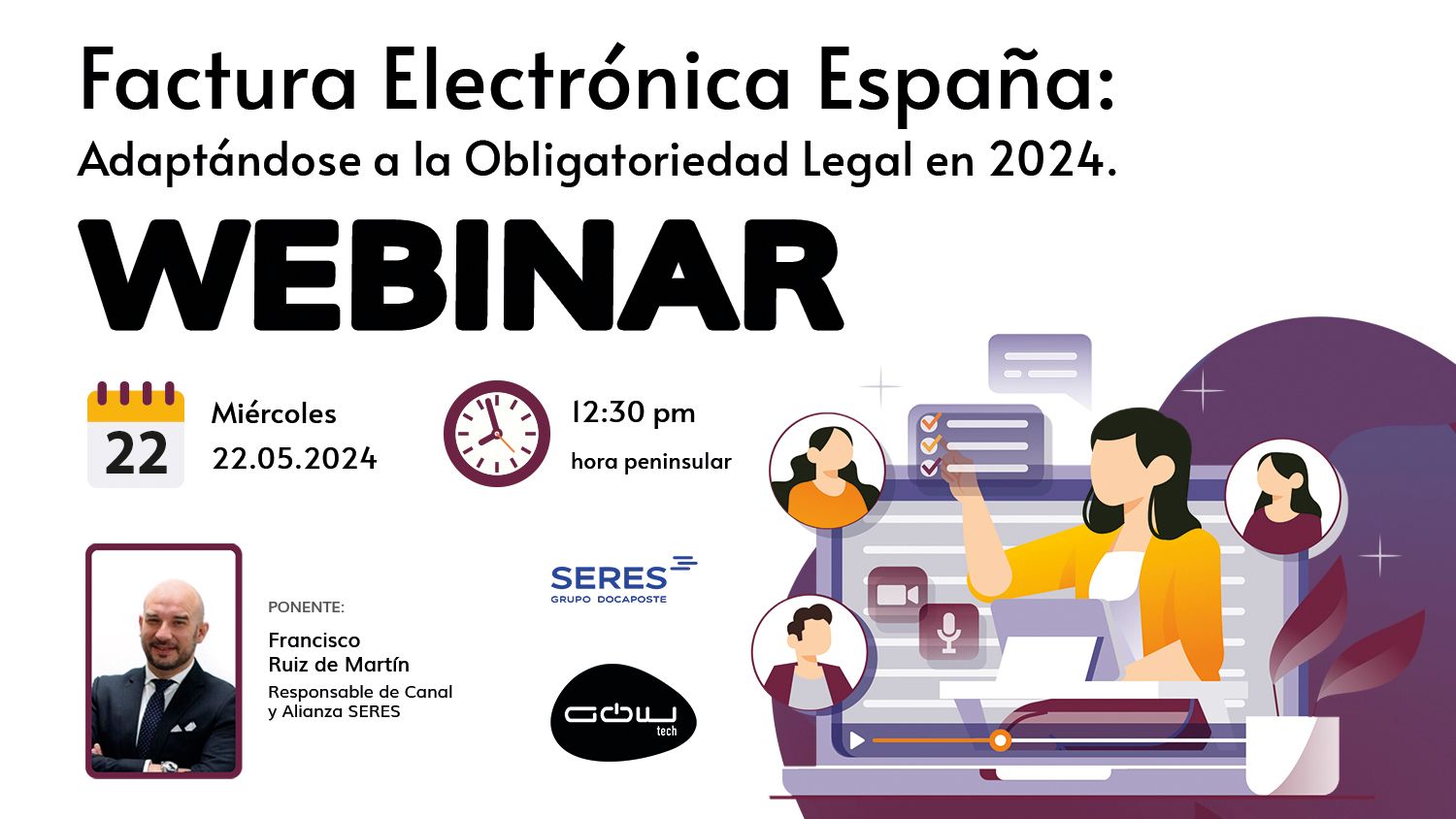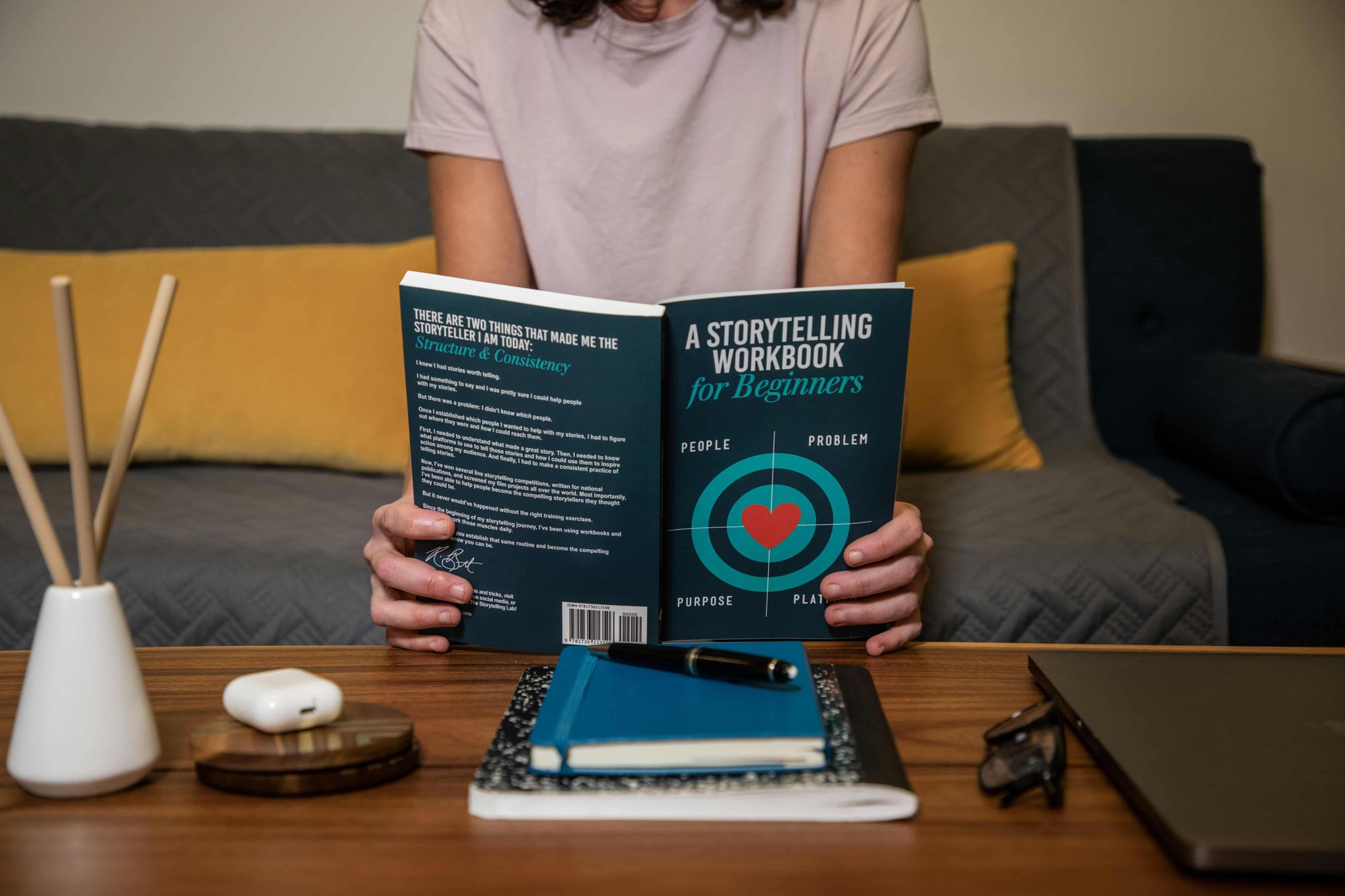In Gowtech we want to give you all the tools to achieve the success of your business . To do this, we will coordinate all the tools we have to achieve the achievement of the marked objectives.
There are many digital tools that exist, but you have to establish a guide so that the digital marketing we carry out is effective and reaches our potential customers.
In this post we will address the INBOUND MARKETING, which consists of non -intrusive techniques to attract customers to our website thanks to actions that provide value to the customer during the well -known consumer trip, that is, the customer's experience throughout the entire purchase process.
Otherwise, they are techniques that we use on our website, so that when our customers detect that they have that need, in the first phase of the purchase process, they go to us in a totally voluntary way. Next, we will see the reasons why the client can reach your website in an unintentious way.
Inbound marketing strategies focus on what the consumer wants today. We are so bombarded with mass advertising, that we do not want to receive it so directly. What we are looking for here is that it is the user himself who reaches us when he needs us.
For this, it is important to go through the four phases of Inbound Marketing, and apply them in a correct way.
Traditional Inbound Phases
Phase 1 - Attract
The objective is clear that users reach us, before the competition. In this phase we have to turn strangers into visitors, everything begins here.
We have to capture their attention to generate that curiosity that encourages them to know more about us and want to know each other.
The most used tools in this phase are: SEO positioning, social networks and recommendations.
Phase 2 - Convert
We already have traffic towards our website, for these users they are still unknown. To these strangers we have to turn them into Leads using techniques to obtain information about them, to help us generate our own database.
To get the generation of Leads, we have to offer a value claim. This incentive has to be attractive enough to get visitors to fill the form.
Phase 3 - Sell
In this phase we have to identify when it is the right time to sell, since a user when he arrives for the first time the same is not yet prepared to make the purchase.
We must classify those leads that come to our page, to know when it is time to go to action.
To achieve this classification of the Leads, we have two processes:
· Lead Scoring: We will give a score to each lead depending on the interaction you have on our website, being able to detect in the future when it is ready for sale.
· Lead nurturing: These need a maturation process, so we will develop a personalized content strategy, to increase the interest they feel for our company.
Phase 4 - loyalty
These phases do not end with the sale, since there is no better consumer than someone who already knows and trusts us.
A satisfied customer, when he will need us again, will go to us in front of another he does not know. A faithful client will also recommend us among your acquaintances, in social networks and in forums, thus achieving free advertising.
In this phase we will bet with Newletter to keep us in the mind of the consumer and do not forget us and for a loyalty strategy with exclusive incentives for these clients, because loyalty must be rewarded.
Once the 4 traditional phases of traditional marketing are known, we will see how they have adapted over time, and as the well -known conversion funnel has no end, since a loyal client when buying us again begins the process again.
Modern Inbound Marketing Phases
As is evident, everything evolves, and this was not going to be less. Digital marketing is constantly transformed, and a few years ago Hudspot (software used for the implementation of inbound marketing strategies and known by all professionals in the sector and sales) reinvented the classic conversion funnel with the “Flywheel” or circular model.
Phase 1 - Attract
This phase does not change compared to that of the Inbound Traditional Marketing. We will seek to seduce and attract the public in a subtle way. We will create content that position us better in search engines and that attracts the interest of our potential clients. It will be a non -intrusive way to start a relationship with those people who are interested with our brand.
Phase 2 - Implicate
We stop being the center of our strategy to give way to users. They will be the main axis, and we will seek to provide solutions to their problems and offer them information that helps them overcome their needs, challenges and goals.
The most extensive and exclusive contents will help us to make them feel part of our brand getting them to register.
Phase 3 - delight
This stage does change about the traditional one, it is no longer about selling, but to delight the consumer with a unique experience. The goal is for customers to meet their needs and achieve their challenges and goals thanks to us, becoming our prescribers and future clients.
Advantages of using inbound marketing against traditional marketing
We are currently so overexposed to an information bombardment that users end saturated. This has caused traditional marketing tools to have lost strength against new techniques.
Traditional marketing aims to profit from the business and expedite stocks, leaving the interaction with the client in the background.
To this are added the disadvantages it presents:
- High costs. This is one of the most notorious problems of these tools. Not all companies can face these expenses.
- It is a unidirectional channel. It is only the company that exposes the information and does not expect customer feedback.
- Difficulty when measuring results. The metrics that are carried out are not entirely exact, making it difficult to measure.
- Changes in the way of consuming. New technologies have changed consumption habits and with it traditional marketing has lost a lot of strength.
Observing these disadvantages, inbound marketing tools have made their way due to their demand and the advantages it presents against traditional marketing. Some of these advantages are:
- Increase the visibility of your business. It is the use of more subtle and not so intrusive tools, they will help to give your business the push you need.
- Reduce the cost of acquiring our customers.
- Attracts potential clients. If we develop a good inbound marketing strategy and follow the marked guidelines we will attract potential customers in an easy way.
- Generate quality content. It is essential to make quality content that helps attract potential customers to make them new customers.
- Optimize the sales process.
- It is a bidirectional channel. The client's opinion is part of the process and listening to it in an active way will help us to evolve and remedy possible deviations that appear during the purchase process.
- Ease when obtaining metrics. Thanks to digital marketing tools, our measurements will be much more exact, giving us more precise results.
- Less costs. Inbound marketing is 62% cheaper than conventional marketing, thus many companies will have access to it.
Once the advantages are seen, it is time to start the necessary tools to put our business ready.
As we have seen at the beginning of this post, it is important to identify in which phase we are, since the use of the different strategies is different according to the objectives we want to carry out.
Attraction phase
As we have previously explained the objective of this phase is to direct users towards the contents of the company. To get it we will resort to:
- SEO: It is essential to be well positioned in the search engines, since when a user has a need it is where they turn. These techniques are aimed at achieving the best possible positioning of a website or content in the search results. These will help us give more visibility.
Search engines reward fresh content by positioning it better in searches working SEO Long-tail, we can get good faster results, since there will be less competition because there are few companies that work on them.
- Blog: As we have said before, search engines reward fresh and quality content, so with a blog we can work varied themes and add the most wanted keywords to position ourselves better.
- Social networks: Thanks to the interaction of social networks we can meet our target audience, know what issues interest them and create content that is attractive to them.
- Website: This must be adapted to be easy to use by our target audience and that it is optimized to acquire traffic, interact with users and make them become potential customers or customers.
- Newsletter: With this tool we will inform users of the latest developments without the need for our website to go, in this way we will create quality content to generate traffic and to loyalty.
Conversion phase
The tools that we will use in this phase to make visitors into potential customers will be intended for personal data that allow us to create a quality database. Visitors will be willing to give us their data if we give them something in return. This can be achieved by offering them valuable content through ebooks, infographics, courses, webinars, etc. Key techniques with:
- Landing Pages: As the name implies this, refers to landing pages. Filling a simple form, the user can access discounts, offers or premium content. It is important to make it easy.
- Cta (call to action): o What is the same the calls to action are banners or visual elements. These stand out about the rest of the elements of the website and their objective will be to attract the user's interest and encourage him to carry out a certain action.
- Contact forms.
Selling phase:
Once we have attracted traffic to our website and we have made them potential customers, it is time to sell. For this we can use these techniques:
- Email Marketing: This tool will be in charge of reaching your client at the right time to communicate quality and attractive content that transmits value and confidence to close the purchase and finally become customer.
- CRM (Customer Relationship Management): This technique will help us gather the greatest amount of users to generate long -term relationships and to reach the last phase of loyalty.
- Marketing automation: in this way we will reduce manual works and increase the efficiency of our actions.
Loyalty phase
It is the last phase and the most important. Once you transform a sale it is important to keep customer satisfied. If your brand manages to conquer the client, it will become a promoter of it.
You should always be in continuous contact, you cannot abandon it once the purchase is finished. To maintain this relationship you can use:
- Social networks: they will allow you to approach and interact with them, in this way we can know their tastes and needs.
- Content marketing: This channel will contribute what is necessary to extend that relationship over time, offering value content to them and provide usefulness.
As we have seen throughout this post, Inbound Marketing has very powerful tools to position you at a much smaller cost than conventional marketing.
In Gowtech we have everything you need to make your website triumph. We will analyze all phases and what are the tools that most adapt to achieve your goals.
Do not wait any longer and request a digital audit of our professionals to advise you and put an end to the stagnation of your website.





